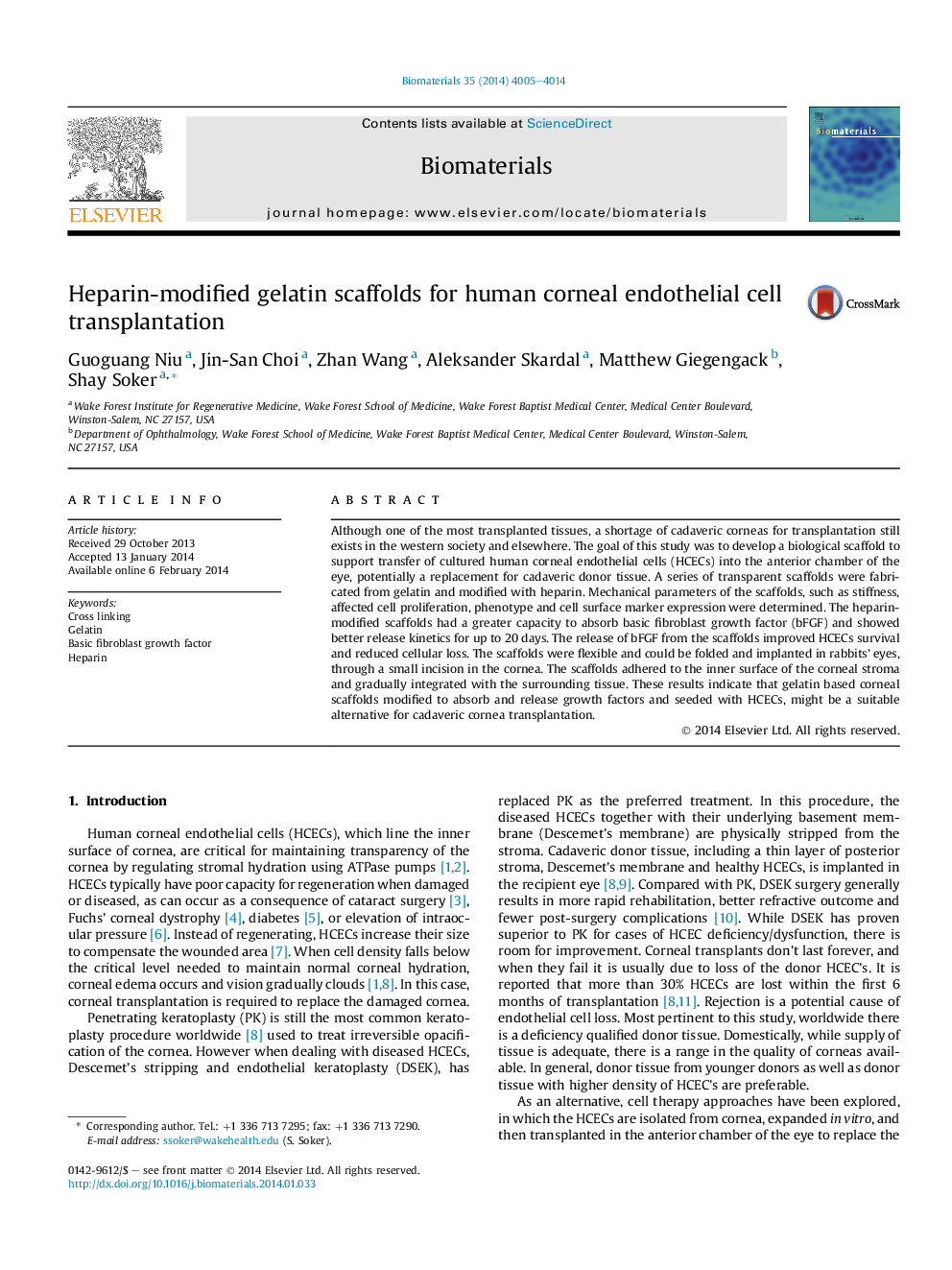| Article ID | Journal | Published Year | Pages | File Type |
|---|---|---|---|---|
| 10228033 | Biomaterials | 2014 | 10 Pages |
Abstract
Although one of the most transplanted tissues, a shortage of cadaveric corneas for transplantation still exists in the western society and elsewhere. The goal of this study was to develop a biological scaffold to support transfer of cultured human corneal endothelial cells (HCECs) into the anterior chamber of the eye, potentially a replacement for cadaveric donor tissue. A series of transparent scaffolds were fabricated from gelatin and modified with heparin. Mechanical parameters of the scaffolds, such as stiffness, affected cell proliferation, phenotype and cell surface marker expression were determined. The heparin-modified scaffolds had a greater capacity to absorb basic fibroblast growth factor (bFGF) and showed better release kinetics for up to 20 days. The release of bFGF from the scaffolds improved HCECs survival and reduced cellular loss. The scaffolds were flexible and could be folded and implanted in rabbits' eyes, through a small incision in the cornea. The scaffolds adhered to the inner surface of the corneal stroma and gradually integrated with the surrounding tissue. These results indicate that gelatin based corneal scaffolds modified to absorb and release growth factors and seeded with HCECs, might be a suitable alternative for cadaveric cornea transplantation.
Related Topics
Physical Sciences and Engineering
Chemical Engineering
Bioengineering
Authors
Guoguang Niu, Jin-San Choi, Zhan Wang, Aleksander Skardal, Matthew Giegengack, Shay Soker,
